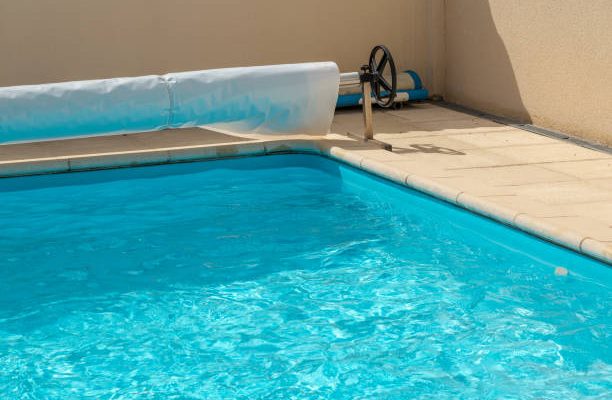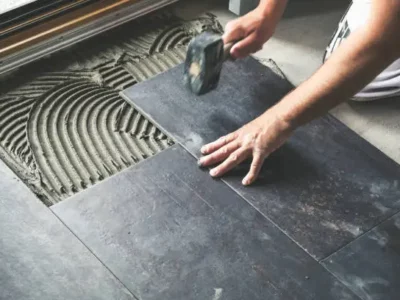Cleaning and maintaining your backyard pool obviously sounds overwhelming; however, it isn’t that difficult if you know the right way to do it.
The best part of maintaining your pool is that it doesn’t require expensive tools and materials. You can use simple home ingredients and tools to keep your pool attractive, healthy, and efficient. Moreover, you don’t need to do the pool cleaning and maintenance tasks every day.
This article will help you learn the necessary ingredients and tools to keep your pool inviting, healthy, and economic. Stay put as we’re diving into the tips and benefits below.
10 Wonderful and Easy Tips to Clean and Maintain Your Pool
Many of us don’t want to shoulder the pool cleaning hassles while longing to enjoy its benefits every day. In that case, you may consider getting professional help. BackYard Helpers is one of the efficient advisors in pool cleaning and maintenance jobs.
Nonetheless, although a non-expert, you can start learning and practicing the tips we’re going to share. These are some efficient tips to make your pool maintenance as a beginner hassle-free.
You can split the tips equally to get five cleaning and five maintenance jobs.
Let’s check out the options below:
1. Get a Bot Cleaner
It’s true that suggesting getting a robotic pool cleaner seems to contradict our low-cost claim. But think about it; investing in a high-end bot cleaner will not only clean your pool water and tiles effortlessly but save you long-term hassles, time, and money.
Bot or automatic cleaners can work their way into the pool water and filter the fine dirt, particles, and debris. A few advanced bots can even wash the tiles by climbing the sides.
2. Make the Skimming and Scrubbing Easy
How to make it easy—by practice, obviously. Skimming your pool should be a daily task without hesitation.
You and your family members are using the pool every day, especially during summer, feeding the water oil, dirt, hair, fine particles, foods, toys, etc. Don’t you think letting them float in the water can deteriorate the water quality?
- Use your skimmer to pull out the objects from the water once in the morning to get rid of the overnight debris or particles.
- You can do it again at night if your pool wasn’t covered during the daytime.
Scrubbing is something you don’t need to do daily, but a weekly job can prevent algae build-up on the tiles. If the algae doesn’t come off easily through scrubbing, apply chlorine.
How to do it:
- Step 1: Fill a sock with chlorine.
- Step 2: Keep it on the stubborn algae spot for a few hours.
- Step 3: Wait until the algae starts loosening.
- Step 4: Wash it with soap and water.
3. Got Tennis Balls: Old or New?
Those bouncy green or white tennis balls can duplicate an absorbent. How so?
Tennis balls are made of nylon and wool on the surface, which can absorb the oil from water. Oil stays on pool water as residue. Mostly, when you apply suntan cream and lotion before getting into the pool, the oil portion of those cosmetics comes off and floats in the water.
It’s difficult to get rid of the oil without professional help, but you can get the job done with tennis balls.
How to do it:
- Step 1: Throw several tennis balls into the pool water.
- Step 2: Let them float for a couple of hours.
- Step 3: Check the pool water to see if it looks clear.
- Step 4: Take the tennis balls out.
4. Schedule a Power Wash for the Deck
The deck sides around your pool aren’t only for sunbathing or idle sitting; they also add to the beauty of the pool itself. So, keeping them clean is mandatory.
However, sweeping the deck won’t get rid of the sticky and stubborn dark patches. You need a power or pressure wash to get the job done. If you don’t have a pressure washer, you can rent one from the nearest home improvement store.
How to do it:
- Step 1: Use bleach and wash soap to spread over the deck area before opting to surface wash (bleach and soap loosen the algae and dirt on the surface).
- Step 2: Once the algae is ready to remove, use the surface washer to deep-clean the deck surface.
- Step 3: Repeat the cycle 3-4 times until the deck is completely clean.
Make sure to keep the washer gun’s nozzle away from the deck surface while using it. It’ll prevent any damage or warping of the deck.
5. Apply Sponge and Vinegar Combo for Descaling
Avoiding the descaling job may worsen your pool water quality. Those crusty white deposits in your pool walls can slow down water circulation, making the swimming experience less fun.
Hard water or high pH level problems deposits calcium on the pool walls and floor which needs to be removed regularly. You might wonder how to do it if you don’t have any decalcifying chemicals at home.
Keep your worries aside as a simple sponge and kitchen vinegar combination can do the trick.
How to do it:
- Step 1: Apply vinegar to the white calcified deposits.
- Step 2: Wipe them up with a sponge.
You can use a long-handled mop to reach deeper lengths.
Scale can also impede the function of the heater, filter, and pump. Thus, descaling can save you from long-term expenses for replacements.
6. Maintain the Pool’s Filtration: It’s a Savior
That filter system inside your pool saves you from various harmful microorganisms, dirt, and impurities. It sometimes filters out hard objects like toys, cups, utensils, etc. The filter keeps the swimming pool clean and healthy.
Maintaining your pool’s filter involves:
- Step 1: Turn off the filter.
- Step 2: Remove the filter cap.
- Step 3: Take out the filter basket.
- Step 4: Remove all the debris from the basket.
- Step 5: Put the filter parts back in their places and turn the filter on.
You should clean your filter system at least once a week to avoid catching diseases.
7. Monitor and Maintain the Water’s Chemical Level
According to the Center for Disease Control, five types of chemical levels are notable in pool water:
- Free Chlorine: It sanitizes the pool water and keeps the germs at bay.
- Calcium Hardness: An appropriate level, between 220 and 350, helps prevent plaster and tile damage. However, pools with vinyl siding should have a lower level of calcium hardness.
- Cyanuric Acid: It saves chlorine from the sunlight and assesses the required free chlorine.
- Acidity: The acidity level should be between 7.5 and 7.8. The appropriate level prevents tiles and pool equipment from erosion.
- Total Alkalinity: It balances the pH in pool water. The optimum level should be between 60 and 120.
Monitoring and testing the pool water’s chemical level is easy as you can get testing kits from the local store.
How to do it:
- Step 1: Get the appropriate testing kit from the store.
- Step 2: Fill the vials with the pool’s sample water.
- Step 3: Mix the required solution with the sample water.
- Step 4: Close the vials and wait until the sample water starts changing color.
- Step 5: Match the sample water color with the color indication on the kit to determine current chemical levels.
- Step 6: Adjust the levels to ensure the optimum balance.
Maintaining the chemical balance keeps your pool water safer, more hygienic, and of course, crystal clear.
8. Use the Shocker
Shocking your pool helps you achieve cleaner and safer water. You may often notice the pool water getting murky and hazy. A quick solution to this is using a shocker.
A shocker is a process of killing the bacteria by raising the chlorine level much higher than usual—precisely, two gallons of shock per ten thousand gallons of water.
How to do it:
- Step 1: Dilute 3-5 times the regular chlorine with water. You may use other chemical sanitizers instead of chlorine.
- Step 2: Pour the solution into the pool’s return pipeline.
- Step 3: Let the solution filter throughout the pool water.
- Step 4: Refill the pool with water.
Shocking is efficient, but it takes time; hence applying twice every season is advisable.
9. Use Chemical Alternative: Baking Soda
If you can avail a suitable alternative for the sodium bicarbonate, use it to maintain the required chemical level on your pool water. What alternative should you use?
Baking soda—the day saver from your kitchen. Baking soda is usable in tons of cleaning and maintenance jobs. So, why not in your pool water?
Baking soda consists of sodium bicarbonate, and most importantly, it comes at a reasonable price. Much cheaper than the chemical at the pool store.
How to do it:
- Step 1: Take a moderate amount of baking soda; about 1.5 lbs per ten thousand gallons of water.
- Step 2: Mix it with the pool water. It may raise your alkalinity level significantly.
- Step 3: Take a pool water sample and test it. Add 3-4 lbs of baking soda if the pH level is below 7.2.
The above should ensure the optimum pH level in your pool water. You can always retest the water sample and add more baking soda to it.
10. Keep the Water Level Even
Check on your pool’s water level regularly. It can lower or raise more than the expected level due to many reasons. For instance, a heavy rain can raise the pool water to reach the brimming point. Conversely, doing super dives into the pool can splash and reduce the water level drastically.
Maintaining the water level is as important as keeping the chemical level on mark.
- The recommended water level is one-third or one-half up the skimmer box hatch.
- If the water level is either higher or lower than the recommended level, you must balance it.
- Use a submergible pump to drain excess water.
- Use a hosepipe to fill the required water level.
Wrapping Up
Our comprehensive guide to clean and maintain your pool should help you get the hang of the required tasks over time.
Being a pool owner, you can realize the price for the lack of maintenance. However, the tips we’ve enlisted in this article are easy to follow and implement.
So, ditch the laziness, and get moving with these pool cleaning and maintenance tasks today. Getting overwhelmed initially is normal. But remember, practice will ultimately make your pool attractive, hygienic, and low-cost.




















